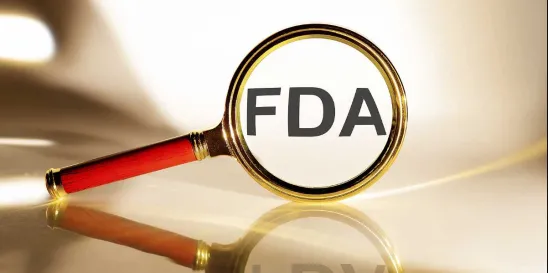On January 18, 2024, the Office of Prescription Drug Promotion (OPDP) of the U.S. Food and Drug Administration (FDA) issued its first untitled letter of the new year to Novartis Pharmaceuticals Corporation (Novartis) regarding a promotional, direct-to-consumer broadcast advertisement (TV Ad) for KISQALI® (ribociclib) tablets, for oral use, indicated for the treatment of adult patients with hormone receptor (HR)-positive, human epidermal growth factor receptor 2 (HER2)-negative advanced or metastatic breast cancer in combination with:
- an aromatase inhibitor as initial endocrine-based therapy; or
- fulvestrant as initial endocrine-based therapy or following disease progression on endocrine therapy in postmenopausal women or in men (Kisqali).
Kisqali has a number of serious risks, including warnings and precautions regarding interstitial lung disease/pneumonitis, severe cutaneous adverse reactions, QT interval prolongation, increased QT prolongation with concomitant use of tamoxifen, hepatobiliary toxicity, neutropenia, and embryo-fetal toxicity.[1]
FDA concluded that the TV Ad made false or misleading representations about the efficacy of Kisqali and was therefore misbranded under FDA regulations. FDA further highlighted the serious public health concern related to breast cancer, and that the claims could lead patients with incurable cancer to hold inaccurate expectations regarding Kisqali’s effectiveness in disease treatment and quality of life improvement.
“Quality of Life” Claims
In this letter, FDA was primarily concerned that the following claims created a misleading impression for consumers:
- Voice over (VO) frames eight and nine: “And KISQALI helps preserve quality of life so you’re not just living, you’re living well.”
- GRAPHIC frames eight and nine: “PRESERVES QUALITY OF LIFE”
- Superimposed text (SUPER) frame nine: “Quality of life was a secondary outcome measure of the trial. At a 26-month check-in, median time to worsening of at least 10% in quality of life score was 27.7 months with KISQALI + letrozole vs 27.6 months with placebo + letrozole. This analysis was not pre-planned to detect a false positive.” [2]
FDA concluded that the statements “preserves quality of life” and “living well” overstated the efficacy of Kisqali by creating a misleading impression that the drug has “demonstrated a benefit on the patient reported outcome (PRO)[3] measure of global quality of life (QoL).[4]” FDA explained the significant limitations to the PRO analysis referenced in the underlying clinical trial (the MONALEESA-2 clinical trial), namely, that there was no alpha-allocation and thus no specified false positive error rate. As such, it was not known whether the cited data was a false positive finding that occurred by chance alone. Therefore, FDA concluded that the data was exploratory and did not support the explicit conclusions made regarding Kisqali’s QoL benefits.
Furthermore, FDA found the presentation of the 26-month check-in data in SUPER frame nine to be misleading by failing to reveal the following significant limitations to the PRO analysis:
- It was not shown that the PRO assessments were frequent enough to collect data to support the QoL claims at 26 months. FDA stated that Novartis had not demonstrated the appropriateness of the intervals for the PRO assessments conducted during the MONALEESA-2 clinical trial (i.e., every 8 weeks for the first 18 months and then every 12 weeks thereafter), noting the possibility that QoL could fluctuate significantly between the assessment points, and, for patients with advanced or metastatic breast cancer, there could be variations in QoL greater than in the general population.
- The PRO included only a seven-day recall period (i.e., patient were only asked about their QoL in the past seven days), thus excluding a patients’ perceptions of their QoL outside of the seven-day period.
- It was possible that the PRO endpoint of global QoL could be tainted by non-treatment and non-disease related factors such as non-cancer related health conditions, personal difficulties, and acute events unrelated to a patient’s cancer. Since the MONALEESA-2 clinical trial was not designed to capture these factors, the global QoL could reflect elements of a patient’s QoL not directly related to the disease and treatment.
- There was no confirmation of or justification to support that the use of a 10% deterioration threshold to measure global QoL was a meaningful threshold for patients with metastatic breast cancer or that the time to deterioration endpoint was appropriate for evaluating PROs. For instance, the PRO did not account for the possibility of patients discontinuing the drug due to a decrease in QoL or starting another treatment. Without this information, the PRO could result in missing data that tainted the QoL results.
FDA further concluded that the “exploratory” PRO analyses were not designed to capture the concept of “living well” and could not be used to support such claims.
Ultimately, FDA’s primary concern was with patient perception of this data and how, as presented, the PRO assessments could mislead a consumer about the QoL benefits purportedly experienced when taking the product. To be sure, FDA recognized the inclusion of disclaimers in the SUPER, such as the statement in frame nine that “[t]his analysis was not pre-planned to detect a false positive.” However, FDA determined this qualifying language was insufficient to overcome the cumulative misleading impression created by the claims.
Presentation and Formatting
In addition, FDA’s concerns appear to have been amplified by the presentation and formatting of information throughout the TV Ad. For example, while the substance of the TV Ad’s “long live” and “living longer” claims and accompanying SUPER disclaimers were not at issue, FDA nonetheless concluded that the manner in which these claims were presented “misleadingly undermine[d] the communication of material information” about Kisqali’s efficacy. This was due to the presence of “multiple, competing presentational aspects that distract the viewer from material information about the benefits of Kisqali,” including various scene changes, background music, and efficacy claims portrayed in several frames that are in much larger type size and more centrally located on the screen than material information.
FDA also took issue with the speed at which material information was presented. For instance, the SUPER presented 48 words constituting material information in approximately 5 seconds, which would require the ability to read 576 words per minute (wpm). Such speed is far greater than the average adult’s ability, with the average adult having a range of 175 to 300 wpm.
Overall, FDA found that by presenting the TV Ad in a manner that would not allow most viewers to read, process, and comprehend the material information, it resulted in a misleading communication of Kisqali’s efficacy. This comports with FDA’s final rule “Direct-to-Consumer Prescription Drug Advertisements: Presentation of the Major Statement in a Clear, Conspicuous, and Neutral Manner in Advertisements in Television and Radio Format” (DTC Final Rule) that requires that information be presented in a “clear, conspicuous, and neutral” manner,” in “language that is readily understandable by consumers,” and that is “understandable in terms of the volume, articulation, and pacing used.”[5]
Takeaways
Although OPDP issued only five letters in 2023, a recurring theme was the continued relevance of FDA’s “Medical Product Communications That Are Consistent With the FDA-Required Labeling, Questions and Answers” (CWL Guidance).[6] Indeed, the 2023 letters focused, in part, on the requirement that efficacy claims are consistent with product labeling, include adequate substantiation, sufficient disclaimers, and offer additional context where necessary. This year’s opening letter continues that trend.
In particular, the Kisqali letter keys on several concepts from the CWL Guidance, and the use of DTC claims based upon data that is not contained in the product prescribing information but is nonetheless consistent with it. Here, the secondary endpoint related to QoL in MONALEESA-2 was not mentioned alongside data for progression-free survival, which is not uncommon to see in oncology product prescribing information. While the reasons for omitting the QoL data from the Kisqali prescribing information remain unclear, we do know that FDA will assess the adequacy of the design and conduct of a PRO tool and the strength and limitations of the PRO data to determine whether it should be included in a product label.[7] In this instance, FDA objected to the conclusive wording used in the QoL claims, such as “preserves” or “helps preserve.” Even though this was a secondary endpoint in the study, FDA categorized this data as exploratory, and thus merely “descriptive” rather than conclusive. FDA addresses this point in the CWL Guidance, noting that while firms are not prohibited from including exploratory data, they must include additional context to show that these results “need cautious interpretation and could represent chance findings.”[8] While the agency’s lengthy analysis on pages 3-4 piled on to the additional issues with the frame nine SUPER and the concept of “living well,” the key paragraph preceding indicates that FDA likely would not have even been okay with the claim phrasing in the first place.
All in all, this letter suggests that FDA is looking very closely at not just the disclaimer, but the claim language that goes along with the description of data. This letter provides yet another example of how OPDP will continue to apply the CWL Guidance to ensure that efficacy claims are consistent with the approved product labeling. Going forward, manufacturers must be mindful that promotional claims are not only substantiated by adequate evidence, but also include appropriate and prominent disclaimers, to avoid increasing potential for harm to patients and/or impairing the safe and effective use of the product.
This letter also serves as a reminder of other important priorities within the agency. With respect to public health policy, we should expect that OPDP will continue to closely monitor promotional advertising directed towards vulnerable patients with serious health concerns. Seriousness of the condition or risks associated with use of the drug is a common theme that has been noted in a number of recent OPDP untitled letters.
In conjunction with the above, we can also expect that OPDP will continue to closely monitor direct-to-consumer promotional advertising, including those broadcast on television and social media. OPDP has made clear that information should be presented in a way that patients can understand and comprehend. To this end, manufacturers should remember to step in to the shoes of the consumer when developing promotional materials, and to consider not only the impact of one claim in isolation, but the overall impression created by the entire presentation, with a goal of helping consumers to be better informed about their healthcare decisions.
FOOTNOTES
[1] Untitled Letter available here: Untitled Letter Kisqali (fda.gov).
[2] Promotional Material available here: Promotional Material Kisqali (fda.gov).
[3] “A PRO is any report of the status of a patient’s health condition that comes directly from the patient, without interpretation of the patient’s response by a clinician or anyone else.” See Unititled Letter Kisqali at page 2.
[4] “Global QoL (i.e., global health status) is a component of the European Organization for Research and Treatment of Cancer Quality of Life Questionnaire (EORTC QLQ-C30)). Global QoL is a summary score which measures a patient’s perception of their overall health and/or overall quality of life in a given timeframe.” Id.
[5] See Final Rule, https://www.govinfo.gov/content/pkg/FR-2023-11-21/pdf/2023-25428.pdf. See also “Consumer-Directed Broadcast Advertisements, Guidance for Industry”, August 1999, https://www.fda.gov/media/75406/download.
[6] CWL Guidance available here: https://www.fda.gov/media/102575/download.
[7] See “Core Patient-Reported Outcomes in Cancer Clinical Trials, Guidance for Industry”, June 2021, https://www.fda.gov/media/149994/download.
[8] CWL Guidance, at 13.





 />i
/>i

